I received some more components in the mail today. Most of them were base station equipment, all from DPCAV.COM. The items I received were the 900Mhz patch panel antenna, a dipole 900Mhz omnidirectional antenna, 2 900Mhz receivers, some Kapton tape, a bunch of batteries I ordered for my Aiptek 8800 digital camcorder and A/V input capable recorder as well as 5 ECS-D480A SAW filters.
The first challenge was to replace the SAW filter on one of the 900Mhz receivers. These 900Mhz and 1.3Ghz receivers use a stock DSS (digital satellite) TV receiver module meant for set top boxes, the 2.4Ghz DO NOT need to be modified this way (lucky you 2.4Ghz owner.. oh by the way, be careful using a 2.4Ghz R/C system with a 2.4Ghz video transmitter!) The filter they include has a 21-27Mhz bandpass. The filters sit in the RF path behind the 900Mhz Rx circuitry if I recall correctly. The DSS boxes are setup for a dual channel LNB/LNA input and thus they have a larger bandwidth than required for our FPV stuff. By replacing the SAW filter with one which has a narrower bandwidth, we can get rid of excess video signal noise to provide a clearer video signal. Our video signal is only 4-5 MHz and our audio signal is just portions of that. The ECS-D480A SAW filter is a 17.6 MHz bandpass filter and will reduce noise and increase receiver sensitivity. Doing so can provide up to a 3db gain in receiver signal quality!
There are some concerns about this conversion. Some folks have stated that while the video signal quality has increased at range, the video tends to cut out more quickly when the aircraft reaches the extents of usable range. I have not seen solid proof of this, however I have seen what I consider solid proof (3 video links) that it does improve video quality and for me that is enough to perform the modification.
As I read these forum threads I see people saying their 40 or 45 watt soldering irons are not powerful enough to remove the SAW filter. One thing you need to consider while soldering/de-soldering large jobs is the mass of your soldering iron. Manyof these 40/45 watt soldering irons are very narrow and slender. There is not much mass to them and the heat drains quickly from them into the work piece. Temperature controlled soldering stations can account for the loss in temperature and will quickly ramp-up the heating element to compensate for the heat loss. Generic type soldering irons (plug goes from wall to the iron) do not have the ability. Radio shack sells a 40 watt soldering iron in the stores for US$8.79 which has a large soldering tip mass and body mass. This will deliver enough heat to de-solder this SAW filter with solder wick/desoldering braid, no problem. If you cannot source this a higher power iron can be used. Remember it’s about heat capacity, not wattage. Most soldering irons will reach the same temperatures, but may not be able to reheat as fast or do not have the heat capacity to properly melt solder. Too much power and you will risk damaging your Rx module or circuit traces.
So now with that out of the way, onto the actual steps of replacement. The pictures are by the steps and formatted somewhat small. You can click on each image to see an embiggened version.
This is the Receiver (Rx) module, you may recognize the shape and design, it’s very common.
Remove the four screws from the case and slip off the top cover, you will then be presented with this.
Use a wrench or pair of pliers to remove the nut from the RF output connector where the antenna connects and carefully remove the RF module from the case. If you break a wire here you will have to re-attach it, be careful and deliberate and take your time, it’s not a race.
Once you have remove the RF module, remove the cover plates by prying them up very carefully. There are sensitive components under those covers and you don’t want to damage them! The big round thing you see under the cover is the old SAW filter. You will probably see a BIG blob of solder between it and the metal shielding of the RF module. This is the hardest bit of solder to remove. With some -~extreme~- patience and the right soldering iron with soldering wick you will be able to remove it. Heat the blob with the soldering iron, if it doesn’t melt within several seconds your soldering iron may not be up to the job, run out to Radio Shack. At this stage I had to drive 30 miles round trip and spend $15 for a larger soldering iron and some soldering wick at Radio Shack (You’ve got questions, we’ve got blank stares!).
Once you have removed that giant blob, you will need to use the soldering iron and wick on the back side of the board to remove solder from the 3 pins on the underside as best as possible. At this stage the old SAW filter is junk, but be very very careful not to damage or melt the solder on nearby components. Do some zen, some deep breathing, steady yourself and be patient. Do not DIG or PRY or STAB at the solder joints no matter the frustration. That is not the way to learn soldering and it will damage things!
Wow! Finally, that stupid #@$) !@#$@ #@$ is out of there. It might have taken a bit of time using those artful and careful soldering skills, and maybe a pair of pliers to pull on it gently as you heated up the whole can real good but gosh darnit it’s out of there! Make sure you use the soldering wick to remove any excess solder in the three holes so you can put the new unit in. BUT to be sure not to mess any of the other parts up or you’ll be placing another order with your favorite FPV dealer. You should get a cotton swab dip it in some rubbing alcohol (grocery store, health aids, 90%) and wipe down the area really good. You’ll probably be surprised at all the brown goo that comes up. That’s the flux from the solder, in case you were wondering(some were, some weren’t :D). Make sure you let it dry out good before the next step!
Hey that’s pretty sweet, you put the new SAW filter (can) in and put a new blob of solder on it’s side. You even made sure the tab on the new can was aligned with the mark on the board! It may not be as big and as inaccurate as those mass production shops, but it looks good, smooth and like a drop of liquid soaked in smoothly over the metal parts rather than a blob floating on the surface. Good job!
Now carefully go to the backside and using some fresh solder, make sure the two signal leads (they have narrow traces coming from them on the circuit board) are re-soldered well and clean. Then make sure the ground lead is also soldered well. To finish things up, heat up that pad right in the middle of the underside of the can and ad a tiny bit of solder until it all flows out nice and smooth.. not too much now.
Okay, now that you’ve done all that, and have taken pictures for your own blog or forum posts. Make sure you re-assemble the entire unit carefully. With this stuff, it may not be the newest technology, but it does require your attention and care.
As some additional resources I recommend the following links:
DPCAV.COM – SELLS BETTER SAW FILTERS
RCExplorer.se – Exchanging the SAW filter in a 0.9/1.3Ghz receiver for a better one
RC Groups – Replace Saw Filter on 900Mhz Receiver!
RC Groups – 900Mhz video receiver sensitivity improvement searching !(editor gasps for breath)
RC Groups – how to remove SAW filter from 900 rx’s?
RC Groups – To saw or not to saw?filter that is
Video of SAW Filter Replacement (by Vimeo user Ian, alternate method of removal of the old filter)

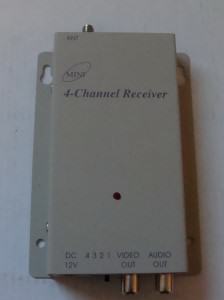
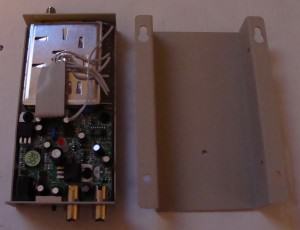
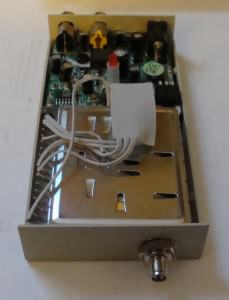
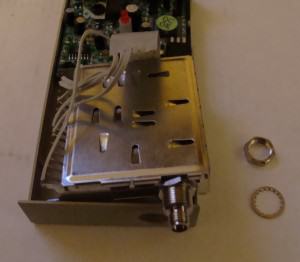
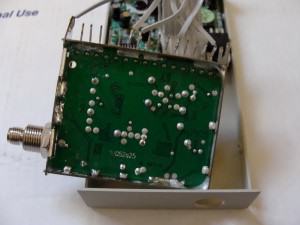
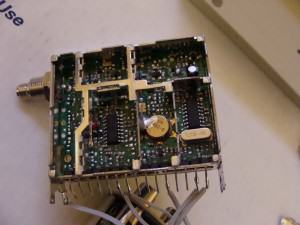
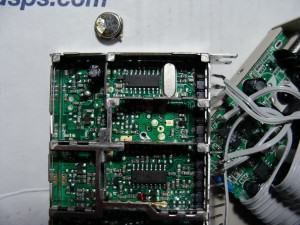
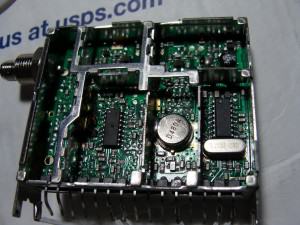
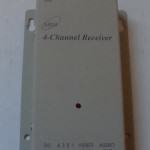
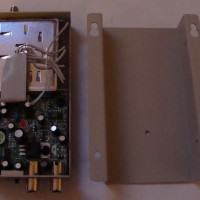
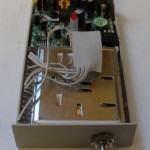
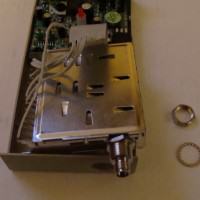
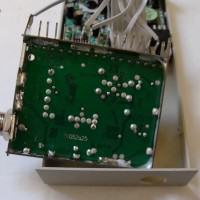
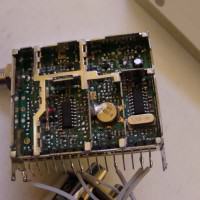
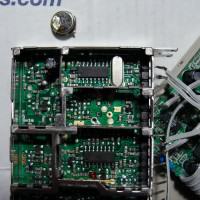
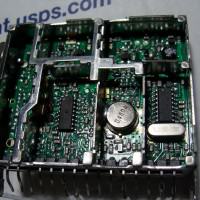
Leave a reply to Replacing the SAW Filter in a 900Mhz A/V Receiver for FPV